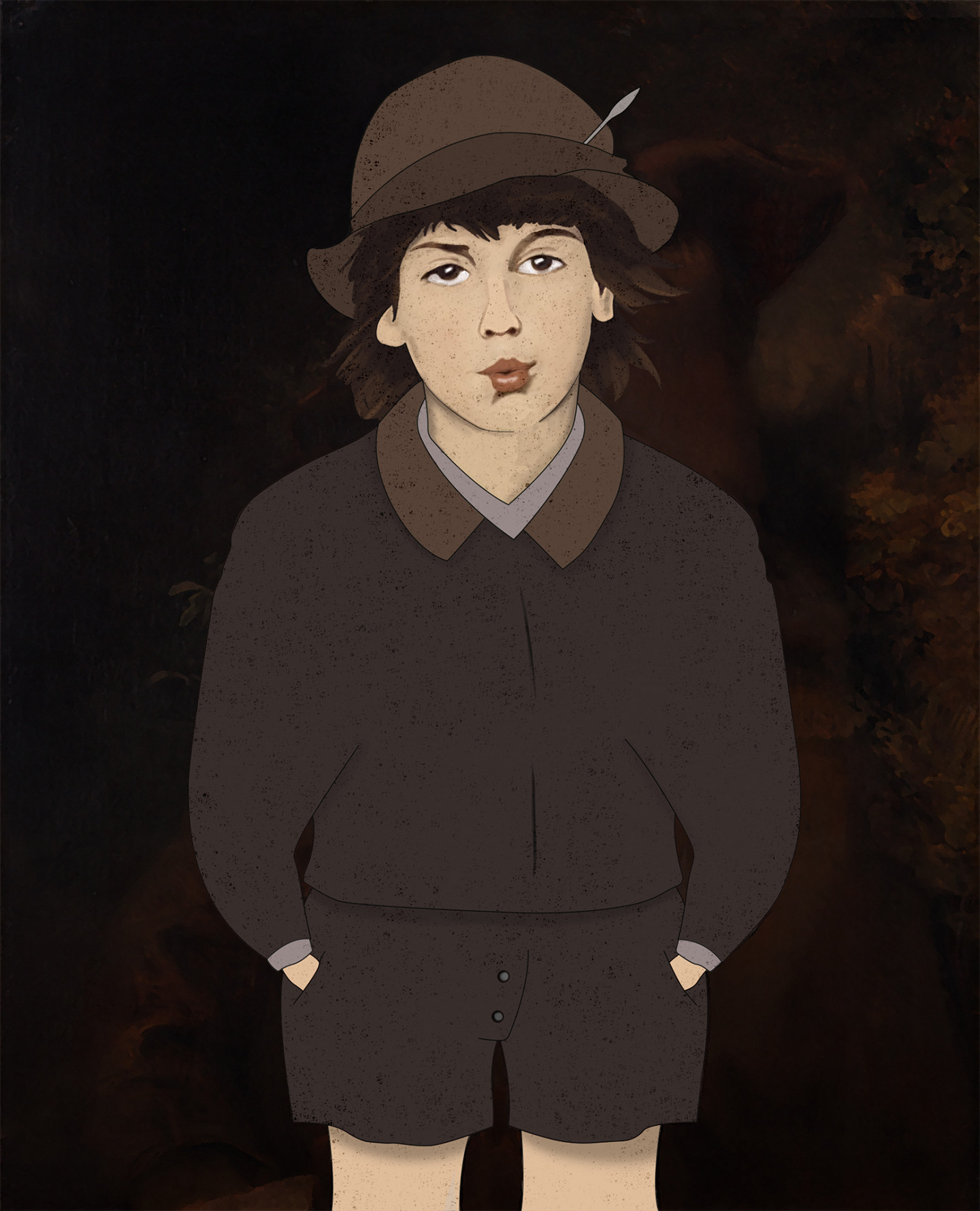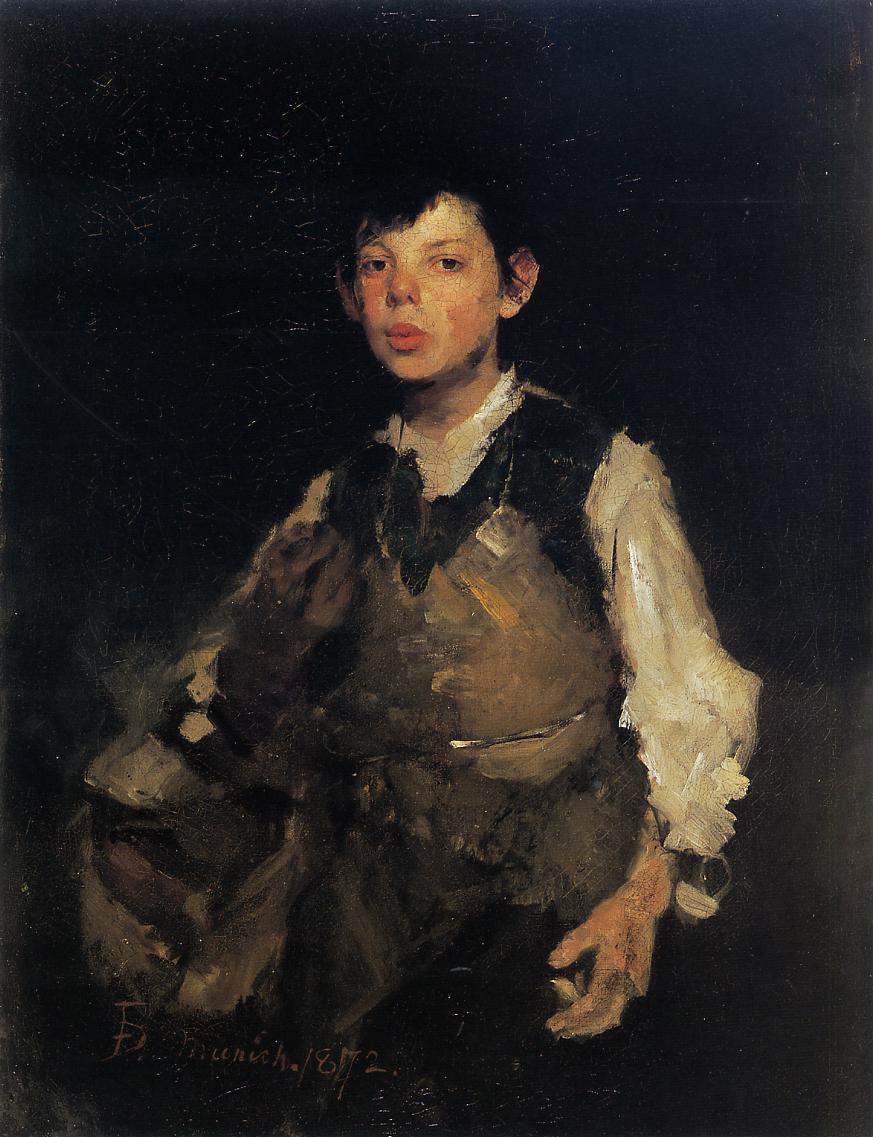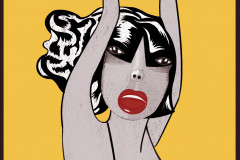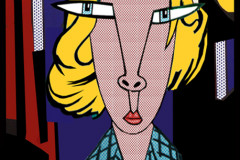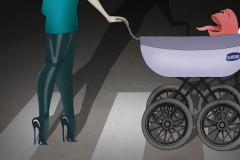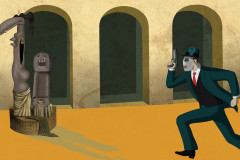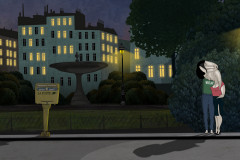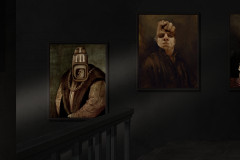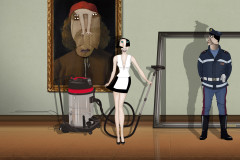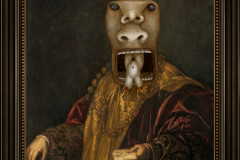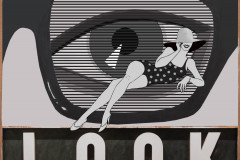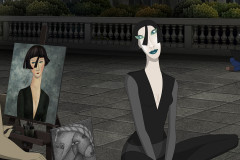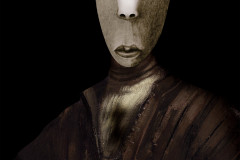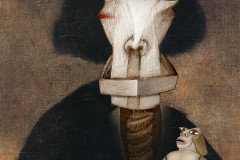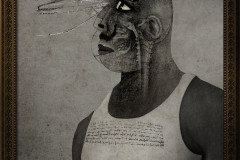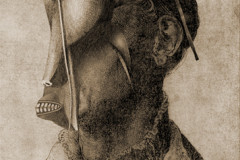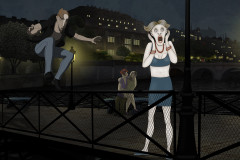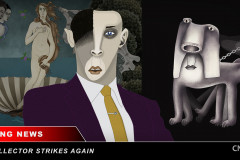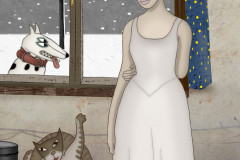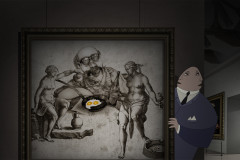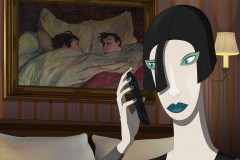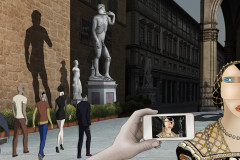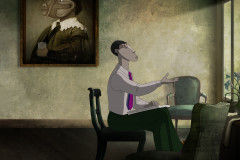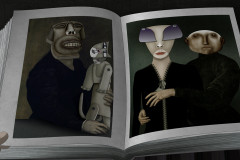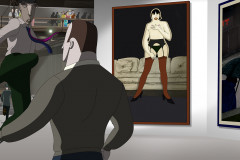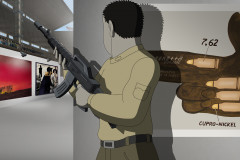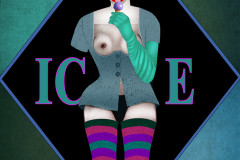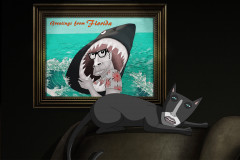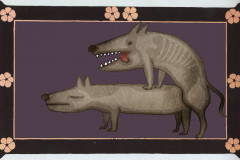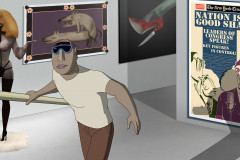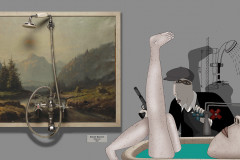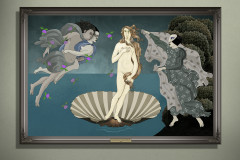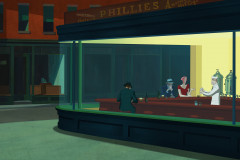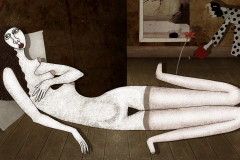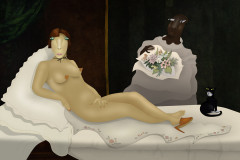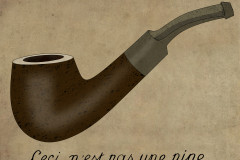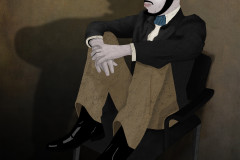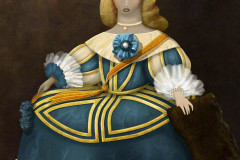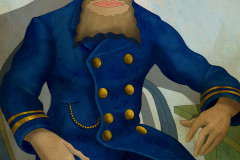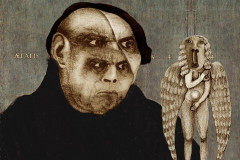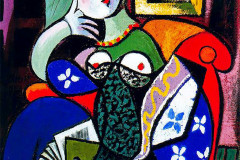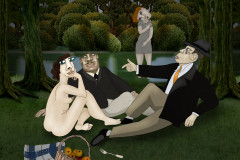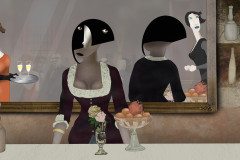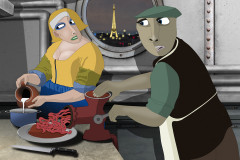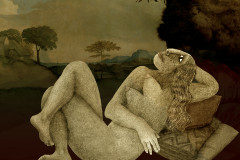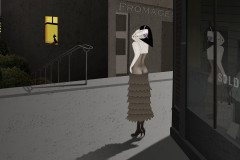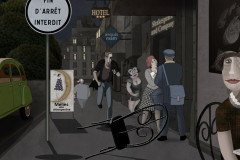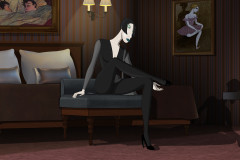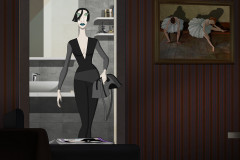Duveneck, Frank (1848-1919): Fütyülő fiú, 1872. (olaj, vászon, 71 x 53 cm), Cinncinati Art Museum. A realista stílusú amerikai életkép- és portréfestő egyik legismertebb műve. A filmben hamarabb hallja meg Ruben Brandt a fütyörészést, mint látja meg a fiút a vonat mosdójának tükrében. Többször is visszatér a fiú alakja, mégpedig a másik gyakori „szereplővel”, a csigával. A kép idővel Ruben Brandt gyűjteményébe került.
A fiúcska a festményen is mintegy „a semmiből” lép elő, akácsak a filmen, s a sötét, jelzés nélküli háttér előtt arca és bal karja van csak erőteljesebben megvilágítva. Nézd meg kicsit alaposabban a bal kezét – nem hiányzik onnan valami? Eredetileg cigaretta volt benne, s a kép címe „Dohányzó fiú” volt, de ezt a cenzúra átfesttette Duveneckkel – úgy látszik az 1870-es években sem volt oké ilyen fiatalon dohányozni? A német bevándorló családban és kolóniában felnőtt Duveneck egyébként ugyanazon a müncheni akadémián tanult, ahol a magyar Munkácsy Mihály, valószínűleg ismerték is egymást, még egy olyan képe is van Duvenecknek, amelyet Munkácsy művéről másolhatott. Mindkettőjükre jellemző ez a sötét alapon, laza ecsetkezeléssel, az arc kiemelésével dolgozó festésmód, amelynek gyökere a holland barokk portréfestészetben, például Frans Halsnál található, s amely Duvenecknek Európában is nagy népszerűséget, sok tanítványt hozott, Amerikába visszatérve pedig jelentős újítónak számított.
Frank Duveneck (1848–1919): Whistling Boy, 1872
(oil on canvas, 71 x 53 cm), Cincinnati Art Museum
The realist-style American genre and portrait painter’s most well-known work. In the film, Ruben Brandt hears the whistling before he sees the boy’s reflection in the train’s bathroom mirror. The boy’s figure returns repeatedly, often accompanied by another recurring “character” – the snail. Eventually, the painting becomes part of Ruben Brandt’s collection.
The boy in the painting seems to step out “from nowhere,” just like in the film; in front of the dark, undefined background, only his face and left arm are highlighted. Look more closely at his left hand – doesn’t it seem like something is missing? Originally, there was a cigarette in it, and the painting’s title was Smoking Boy, but censorship had Duveneck paint it out – apparently even in the 1870s, underage smoking wasn’t acceptable.
Duveneck, who grew up in a German immigrant family and colony, studied at the same Munich academy as Hungarian painter Mihály Munkácsy; they likely knew each other, and Duveneck even created a piece that may be a copy of a work by Munkácsy. Both artists are known for a style that features dark backgrounds, loose brushwork, and highlighted faces – a technique rooted in Dutch Baroque portraiture, such as in the works of Frans Hals. This style brought Duveneck widespread popularity in Europe and many students, and upon returning to America, he was considered an important innovator.






